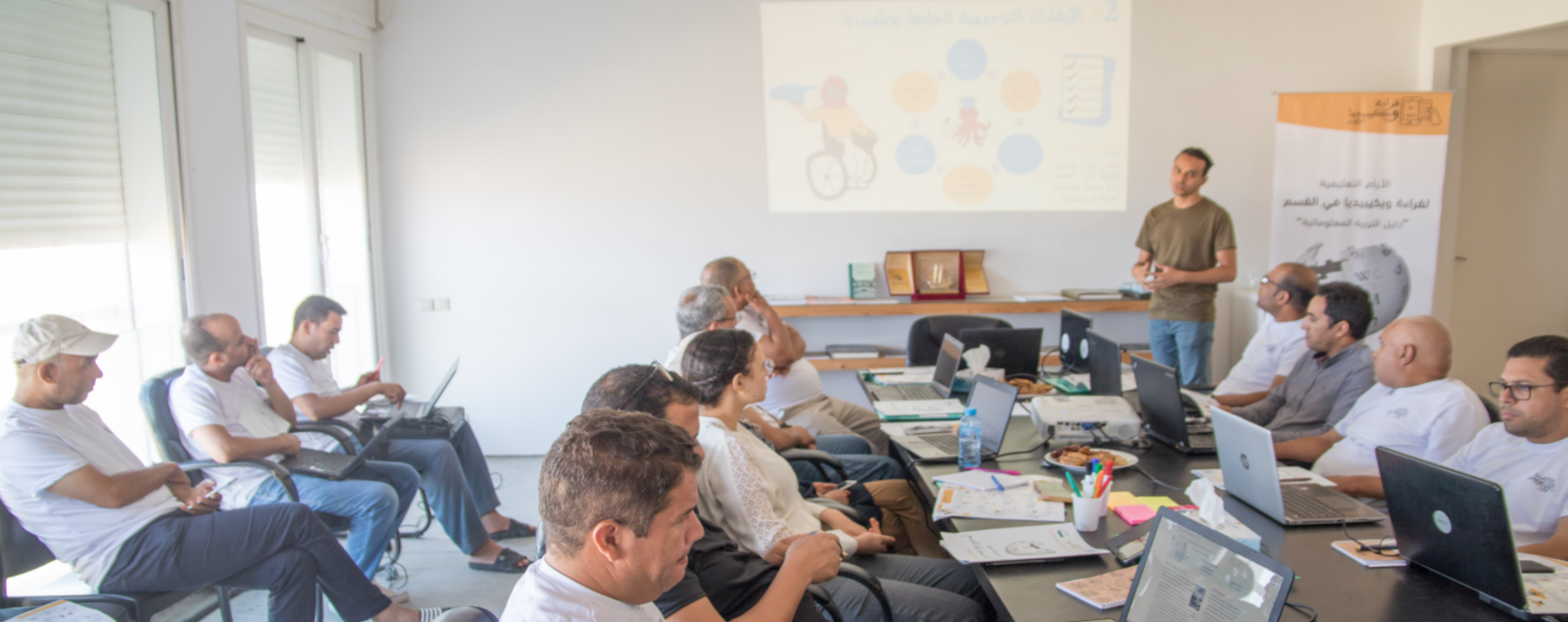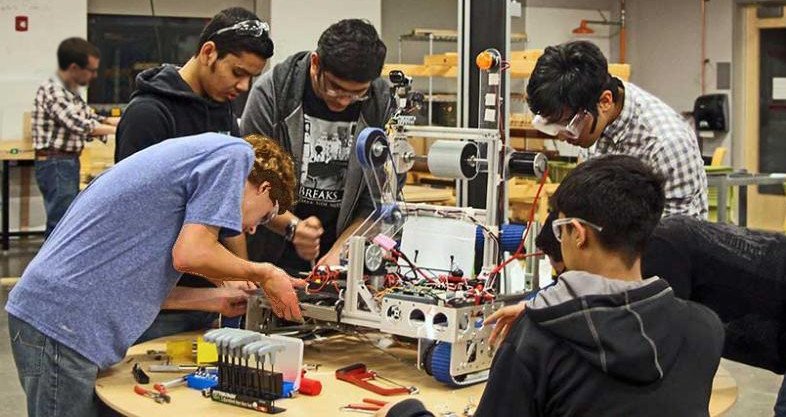
Education & Training
Engage with us
Most trusted and professional training provider
Aibot Ink is the first choice when it comes to training whether it be corporate or student job readiness programs.
Corporate training
Aibot Ink being an industry leading innovative company, provides high level customised training courses for corporate employees. Various soft skill and human development courses are provided by senior and highly professional certified trainers from around the world. Aibot Ink is the trusted training partner for many MNC’s and home grown organisations!

Job ready training
While educational qualification is the basic must have for every individual, the real skills and knowledge comes from the industry ready courses provided by Aibot Ink. There is significant mismatch/gap between the educational qualifications and the industry needs. 90% of the qualified graduates are not employable as per the latest studies. Whether it be soft skills or the industry specific skills, we provide the best training which will make the student capable of getting their dream job!

Job Skill Programs
Docker Development Platform
Common:
- Introduction to Linux commands
- Basics of programming in Java, NodeJS, and Python
- Basics of networking, including switching and routing
- Source code management with Git
- Fundamentals of SSL and TLS protocols
- Introduction to web servers with Apache
- Basic database concepts and their importance
Dockers:
- Introduction and overview of Docker
- Docker containerization
- Installation and setup of Docker on various operating systems
- Basic Docker commands and usage
- Creating and managing Docker containers and images
- Building Docker images using Docker files
- Networking and linking containers in Docker
- Data persistence and storage in Docker
- Docker Swarm and orchestration of containerized applications
Kubernetes:
- Introduction to containerization and Kubernetes
- Installation and setup of a Kubernetes cluster
- Deploy and manage applications in Kubernetes
- Kubernetes architecture and components
- Networking and service discovery
- Storage options and management
- Configuration management
- Troubleshoot and debug Kubernetes applications
Objectives
By the end of the training program you will be able to understand and master the concepts, tools, development, implementation and testing of the Docker project.
You will be able to immediately take up any assignments or jobs on Docker with complete confidence.
Embedded C Programming
M1- Data Structures & Algorithms:
- Introduction to Data Structures
- Algorithms and Abstract Data Types
- Complexity of Algorithms, Linked Lists, Stacks, Queues
- Searching and Sorting Algorithms
- Hashing
- Trees
M2 – Embedded C Programming
- Basics of Program Writing & Coding Practices
- Overview of C Programming language
- Introduction to GNU Toolchain and GNU Make utility
- Linux environment and vi editor
- Tokens of C – Keywords, Data-Types
- Variables, Constants, Operators, Identifiers
- Storage Class Specifiers, Control Flow Statements
- Arrays, Multidimensional arrays, Data Input & Output
- Strings, Loops, Functions and Recursion
- Pointers – Introduction, Pointer Arithmetic
- Pointers and Arrays, Pointers and Functions
- Pointers and Strings, Structures, Unions, Enum
- Typedef, Bit field operators and pointers with structures
- Preprocessors, C and Assembly, Files, I/O
- Variable number of arguments, Command Line arguments
- Error handling, Debugging and Optimization of C programs
- Bit operations, Handling portability issues in C
- Hardware, Time, Space and Power aware Programming
M3 – Embedded Linux Device Drivers
- The Embedded Linux Software Eco-System
- Linux Kernel Modules and Module Programming
- Char Device Drivers
Kernel Internals:
- Dynamic memory allocations
- Handling Delays, Timers
- Synchronization, Locking
- I/O Memory and Ports
- Interrupts, Deferred Executions
- Driver Debugging Techniques
M4 – Embedded Operating System
- Introduction to Embedded Operating Systems
- Anatomy of an Embedded Linux System – Bootloader
- Kernel, Root File System, Process Management
- Interprocess Communication & Synchronization
- Memory Management
- I/O sub- system & Embedded File Systems
- POSIX Thread Programming
- POSIX Semaphores, Mutexes, Conditional Variables
- Barriers, Message Queues, Shared Memory
- Debugging and Testing of Multithreaded Applications
- Socket Programming, Customizing Embedded Linux based on Yocto
M5 – Microcontroller Programming and Interfacing
- Overview of Microcontrollers
- Microprocessors and SoC, RISC vs CISC
- Harvard vs Princeton Architectures
- Overview of Computer Architecture
- Embedded Memories, Timers/Counters
- UART, SPI, PWM, WDT, Input Capture
- Output Compare Modes, I2C, CAN, LED
- Switches, ADC, DAC, LCD, RTC
- Bus Standards (USB, PCI)
- Programming in Assembly and Embedded C
- Overview of ARM Architecture and Organization
- Introduction to Cortex-M Architecture
- Programming Model and Instruction Set Architecture
- Alignment and Endianness, Register access, State
- Privilege, Stack, System Control Block, Power Modes
- Memory Model, NVIC, Exception Handling, Bit- Banding
- Peripheral Programming, SVCall, SysTick, PendSv
- MPU, DMA, Mixing Assembly and C programs
- Introduction to CMSIS & CMSIS Components
- Overview of Cortex A & R architectures
- Introduction to Multi-Core Embedded Systems
- Introduction to FPGA
M6 – Real Time Operating Systems
- Introduction to Real-Time Concepts,
- RTOS Internals & Real Time Scheduling,
- Performance Metrics of RTOS,
- Task Specifications,
- Schedulability Analysis,
- Application Programming on RTOS,
- Porting of RTOS, Configuring RTOS,
- Building RTOS Image for Target platforms
At the end of each module the students are given module related project. This exercise will help the students to apply the learned theories and concepts to the real world scenarios.
At the end of the course the students are involved in ongoing projects in the company.
Objectives
By the end of the training program you will be able to understand and master the concepts, tools, development, implementation and testing of the Embedded C Programming.
You will be able to immediately take up any assignments or jobs on Embedded Systems with complete confidence.
Internet of Things (IOT)
1. Introduction
- 1.1. IOT
- 1.2. IOT applications
- 1.3. IOT Devices
- 1.4. IOT computers
- 1.5. Web of Things (WOT)
- 1.6. AI
2.Technology & Tools:
- 2.1. IOT architecture
- 2.2. Technologies
- 2.3. Tools
- 2.4. Sensors and actuators
- 2.5. Embedded systems
- 2.6. Python, Raspberry Pi, Arduino
3. Communication Protocols & tools
- 3.1. Various communication protocols
- 3.2. M2M communication
- 3.3. WOT architecture
- 3.4. Building applications using WOT
- 3.5. Big data and Cloud connecting
- 3.6. Webservices
- 3.7. Best practices
4. Practical workshops (IOT)
- 4.1. Connecting and managing the devices
- 4.2. AI controlled devices
- 4.3. Real time monitoring of IOT devices
- 4.4. Real world application design, development & implementation
Course duration – 56 hours
Course schedule
- Weekdays (Monday to Friday) – 2 hours daily
- Weekends (Saturday & Sunday) – 7 hours each day
Course Outcome
Upon completing this course, you will be able to:
- Understand and define the term “Internet of Things”
- Evolution and Impact of IoT
- Understand IOT use case scenarios
- Define what an embedded system is in terms of its interface
- Enumerate and describe the components of an embedded system
- Describe the interactions of embedded systems with the physical world
- Identify the core hardware components most commonly used in IoT devices
- Describe the interaction between software and hardware in an IoT device
- Describe the role of an operating system to support software in an IoT device
- Explain the use of networking and basic networking hardware
- Describe the structure of the Internet
- Describe the meaning of a “network protocol”
- E.xplain MANETs and their relation to IoT
Inplant/Internship Programs
Mechanical
- Advanced manufacturing:
2. Additive manufacturing:
3. Building CNC machine:
4. ROBOTICS:
Objectives
Computer Science
1. Android/IOS App development:
2. IOT:
3. Cloud computing:
4. Artificial intelligence:
5. Big Data:
6. Machine Learning:
At the end of each module the students are given module related project. This exercise will help the students to apply the learned theories and concepts to the real world scenarios.
At the end of the course the students are involved in ongoing projects in the company.
Objectives
Electronics & Communication
- 1. Robotics:
- 2. IOT:
- 3. Building CNC Machine:
- 4. CCTV:
- 5. PCB Fabrication:
- 6. Getting started with Arduino:
Electrical & Electronics
- Home automation
- Motor rewinding
- Panel board wiring
- House wiring
